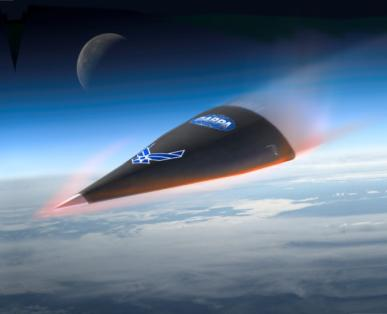The new supersonic drones use a Rotating Detonation Engine (RDE) to reach high speed. The RDE drones can fly at very high speeds. Those drones can carry the AGM-183 Air-Launched Rapid Response Weapon (ARRW). The high-speed drones can act as launching platforms for the hypersonic weapons.
 |
| AGM-183 ARRW |
In that model, the AGM-183 ARRW can use the same model as the Russian Kh-47M2 Kinzhal hypersonic weapon. In the case of the Kinzhal missile, the MiG-31 fighter accelerates to its maximum speed. Then it launches the hypersonic weapon.
 |
| The Hypersonic Test Vehicle (HTV-2) |
The fact is that the missile warhead can reach hypersonic speed when the missile returns to the atmosphere. The arrowhead-looking gliders that the missile carries into the atmosphere allow the missile to hit with different angles.
 |
| SR-72 |
The Air-launched ARRW missiles can also use a supersonic mach-3+ carrier that drops the weapon in its range. The carrier aircraft raises the missile's speed to a level that it can reach hypersonic speed. The fact is that the supersonic carrier can be the drone. Sometimes is planned that the SR-71 or A-12 "Oxcart"-style aircraft can carry hypersonic missiles in an internal weapon bay.
 |
| X-51 Waverider |
The fact is that things like high-speed aircraft or missiles can carry hypersonic sub-weapons. In the case there the hypersonic missile is installed in a Minuteman missile or SR-72 hypersonic aircraft. The carrier vehicle rises out from the atmosphere, makes the ballistic jump, and then that thing will start to dive. The carrier vehicle releases the hypersonic missile against its target during that process. The hypersonic system can use traditional rocket engines.
 |
| Kh-47M2 Kinzhal |
Or more advanced systems can use the scramjet engines for the hypersonic flight. The ARRW and Kinzhal are the first-generation hypersonic missiles. The next-generation hypersonic systems can be the Mach 6+ gunships. The speed of the ammunition that those future systems can launch could be Mach 7+. At that speed, the air-pressure cone is a deadly thing.
https://interestingengineering.com/innovation/venus-aerospace-tests-new-detonation-engine
https://www.nasa.gov/image-article/x-51a-makes-longest-scramjet-flight/
https://www.venusaero.com/
https://en.wikipedia.org/wiki/AGM-183_ARRW
https://en.wikipedia.org/wiki/Boeing_X-51_Waverider
https://en.wikipedia.org/wiki/DARPA_Falcon_Project
https://en.wikipedia.org/wiki/Kh-47M2_Kinzhal
https://en.wikipedia.org/wiki/Lockheed_A-12
https://en.wikipedia.org/wiki/Lockheed_SR-71_Blackbird
https://en.wikipedia.org/wiki/Lockheed_Martin_SR-72
https://en.wikipedia.org/wiki/Rotating_detonation_engine
https://en.wikipedia.org/wiki/Scramjet
Comments
Post a Comment